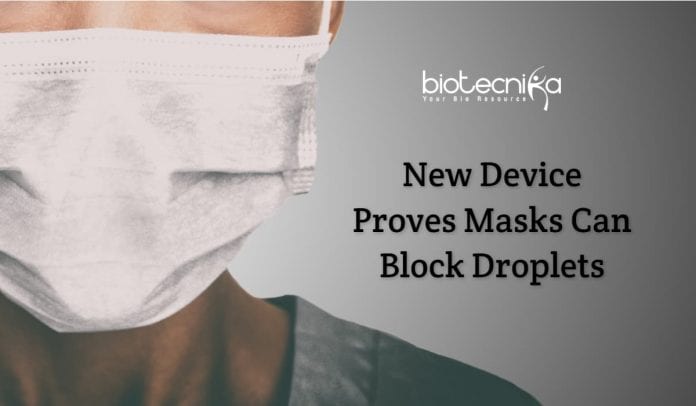Device To Check Efficiency Of Masks In Blocking Droplets Developed
Eric Westman is a Duke physician who was one of the first champions of masking as a way of containing the spread of coronavirus, providing free masks to underserved and at-risk populations in the greater Durham community.
But to make sure the masks can provide the virus-bocking protection and to ensure he is not providing ineffective masks, he approached his colleagues in the Duke Department of Physics and asked if someone could test the masks for him.
Martin Fischer, both a chemist and physicist and the director of the Advanced Light Imaging and Spectroscopy facility, agreed to test the masks. For this purpose, he developed a relatively inexpensive apparatus from common lab materials purchased online. The setup included a laser, a cell phone camera, a box, and a lens.
Fischer, Westman, and colleagues reported in a proof-of-concept study appearing online on Aug. 7 that the low cost, simple technique provided enough proof that masks are effective in lowering droplet emissions.
Fischer said small droplets are released when people speak, so a disease can spread by just taking, even without sneezing and coughing. In blocking expelled particles, some face coverings performed
much better than others, he added.The N95 masks without valves, usually used by front-line health care workers, are the best face coverings, reported researchers. Polypropylene and surgical masks also performed well in blocking droplets.
Good coverage, eliminating a substantial amount of spray from the normal speech, was provided by the hand-made cotton face coverings, while neck fleeces and bandanas like balaclavas didn’t block the droplets at all.
The study that developed a device to check the efficiency of masks was just a demonstration; further research is required to study variations in speakers, masks, and how people wear them. But Fischer said this kind of research could be easily conducted by businesses and others who provide masks to their patrons or employees.
Nearly half of the infections are spread from asymptomatic people who don’t know they are infected and unknowingly spread the virus through talk, sneeze, or cough. So a simple way to reduce the spread of novel coronavirus is to wear masks, Westman said.
99% of the droplets could be blocked before they reach someone else if everyone wore a mask. Maks is the one proven way to protect yourself and others in the absence of a vaccine or antiviral medicine.
Fischer and Westman said it’s important that businesses have good information about the masks they provide to the public and employees to ensure the best protection. Fischer’s intention was to develop a low-cost, simple method that can be shared with others to test the mask prototypes, material, and fittings. This device to check the efficiency of masks is easy to assemble, and the parts are easily available. Moreover, it can provide helpful information about the efficiency of masks in blocking droplets.






























